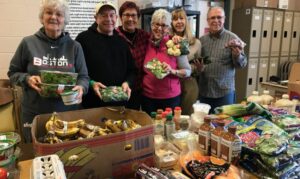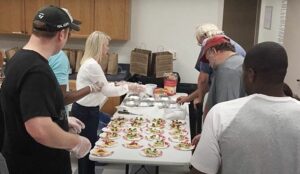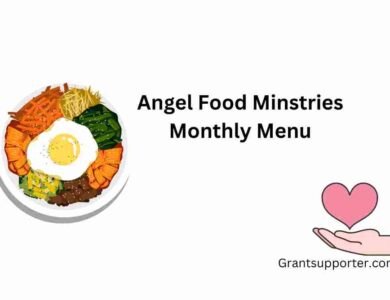Challenges Faced By Church Food Programs
Curious about the challenges faced by church food programs? These programs grapple with myriad obstacles, from limited resources due to tight budgets, which necessitate innovative solutions to provide nutritious meals, to complex distribution and storage logistics. Even with these hurdles, they stretch every resource to ensure no one goes hungry, coordinating food pickup, transportation, and churches that help with food delivery while maintaining freshness and safety. Through determination, church food programs ensure those in need receive sustenance.
Limited Resources
You may face challenges with limited resources in your church food program, such as a dependency on donations. Relying on donations can be unpredictable and may not always meet the needs of your program.

Additionally, operating on tight budgets can make providing enough food for those in need challenging.
Dependency on Donations
Relying solely on donations can pose a significant challenge for church food programs, as the availability of resources may fluctuate unpredictably. When a church depends on donations to feed those in need, it becomes vulnerable to the ebb and flow of people’s generosity.
Sometimes, donations are abundant, and the program can serve many individuals. However, there may also be periods when donations are scarce, leaving the church scrambling to provide enough food to meet the demand.
This dependency on donations can create a sense of uncertainty and instability for the church food program, making it difficult to plan and budget effectively. Additionally, the quality and variety of food that can be offered may be limited by the donations received.
While donations are essential and appreciated, church food programs need to diversify their sources of support and explore other means of acquiring resources to ensure a more sustainable and reliable operation.
Operating on Tight Budgets
Operating on tight budgets can often lead to creative solutions and resourcefulness in assisting those in need. When church food programs have limited funds, they must find innovative ways to stretch their resources and make the most of them.
This can mean partnering with local businesses or farms to secure discounted or donated food or growing their produce in community gardens. Additionally, these programs may rely heavily on volunteers to help with food preparation and distribution, reducing labor costs.
By thinking outside the box and making the most of every dollar, church food programs can continue their mission of feeding the hungry and making a difference in their communities.
Distribution and Storage Logistics
To efficiently distribute food to those in need, it’s essential to have an organized system in place. This includes coordinating schedules, routes, and volunteers to ensure timely deliveries. If you’re interested in community outreach, you might also wonder how to start a food program in your church.

Additionally, adequate facilities for safe food storage are crucial to maintaining donated items’ quality and freshness.
Efficient Organization for Distribution
Start by streamlining your distribution process to maximize efficiency in church food programs. One way to achieve this is by implementing a well-organized system that ensures smooth and timely delivery of food items to those in need.
Start by creating a detailed inventory of available food supplies, categorizing them based on their type and expiration dates. This will help you identify which items need to be distributed first, reducing the risk of food waste.
Next, establish a distribution schedule, taking into account the number of recipients and their locations. Assign volunteers or staff members to tasks such as packing the food bags, loading the vehicles, and delivering them to the designated areas.
Consider using technology to your advantage by utilizing food delivery apps or online platforms to streamline the process and ensure accurate tracking of deliveries.
Lastly, regularly evaluate and adjust your distribution process based on feedback and observations to continuously improve efficiency and meet the needs of your community.
Adequate Facilities for Safe Food Storage
Having well-maintained facilities for safe food storage is crucial for ensuring the nourishment and well-being of those in need. When running a church food program, it’s essential to have adequate facilities that can store food safely and efficiently.
These facilities should have proper refrigeration and freezer units to keep perishable items fresh and prevent spoilage. Additionally, there should be enough storage space to accommodate the increasing demand for food assistance.
It’s also essential to have proper shelving, labeling, and organization systems to ensure that food is easily accessible and can be rotated to prevent expiration. By investing in and maintaining adequate facilities for safe food storage, church food programs can effectively serve their communities and provide much-needed support to those facing food insecurity.
Balancing Nutritional and Cultural Needs
To ensure nutritional diversity in church food programs, you need to consider the recipients’ various dietary needs and preferences.

This means offering a wide range of foods that cater to different cultural backgrounds and dietary restrictions. Incorporating insights from a study on food distribution programs can further enhance these offerings.
By doing so, you can provide meals that meet nutritional requirements and respect the diverse tastes and traditions of the community you serve.
Ensuring Nutritional Diversity
One essential challenge church food programs face is ensuring diverse nutritional options for those in need. It can be difficult to provide a variety of nutritious foods that cater to different dietary needs and preferences. However, it’s essential to consider the nutritional diversity of the meals to ensure that individuals receive the nutrients for their overall health and well-being.
This requires careful planning and sourcing ingredients to balance proteins, carbohydrates, fruits, and vegetables. Cultural considerations must also be considered, as different communities may have specific dietary restrictions or preferences. By working closely with nutritionists, community members, and volunteers, church food programs can strive to create nutritionally diverse and culturally sensitive menus, ensuring that everyone has access to healthy and satisfying meals.
Catering to Diverse Dietary Preferences
Catering to diverse dietary preferences creates a colorful tapestry of flavors and textures, satisfying the taste buds of individuals with different culinary desires.
Regarding church food programs, it can be challenging to accommodate the community’s varying dietary needs and preferences. Some individuals may have religious or cultural dietary restrictions, while others may have specific health-related preferences or allergies.
It’s vital for church food programs to offer a wide range of options that cater to these diverse needs, ensuring that everyone can find something to enjoy. This may involve offering vegetarian or vegan options, gluten- or dairy-free alternatives, or dishes specific to particular cultural traditions.
By embracing these diverse dietary preferences, church food programs can create an inclusive and welcoming environment where everyone can come together to share a meal.
Conclusion
In conclusion, you face numerous challenges when running a church food program. Limited resources can make providing enough food for everyone in need difficult, but your dedication and resourcefulness can help overcome this obstacle.
Furthermore, distribution and storage logistics can be a significant challenge, but with careful planning and organization, you can ensure that food reaches those who most need it.



